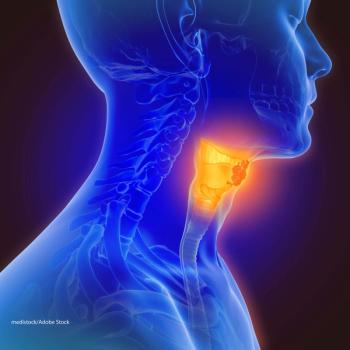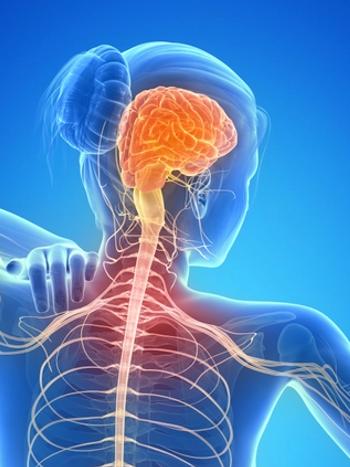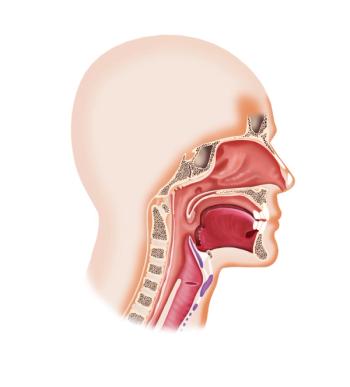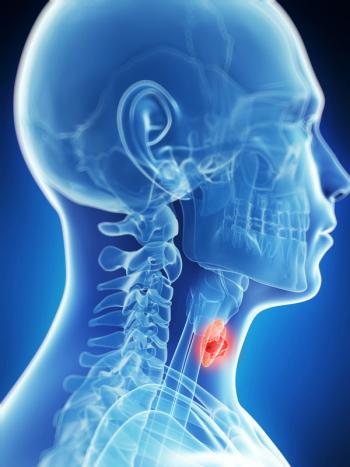
- ONCOLOGY Vol 15 No 2
- Volume 15
- Issue 2
Study Details Use of Amifostine in Radiation Setting
ALZA Corporation and MedImmune, Inc, recently announced the results of a phase III study evaluating the use of amifostine (Ethyol) in the care of head and neck cancer patients who received radiation therapy. Recently published in the Journal of
ALZA Corporation and MedImmune, Inc, recentlyannounced the results of a phase III study evaluating the use of amifostine (Ethyol) in the care of head and neck cancer patientswho received radiation therapy. Recently published in the Journal of ClinicalOncology.(18:3339-3345, 2000), the report details the expanded use of amifostinein the reduction of moderate-to-severe xerostomia. Amifostine was approved bythe US Food and Drug Administration in June 1999.
Reduces Incidence of Xerostomia
"The results of this study may be particularly useful toradiation oncologists in designing treatment approaches for the care of patientswith head and neck cancer, a majority of whom will receive radiationtreatment," said David Brizel, MD, associate professor of radiationoncology at Duke University Medical Center and one of the principalinvestigators in the study. "Ethyol has been demonstrated to help limit thedegree of xerostomia that many patients may suffer as a result of head and neckcancer. In this study, the reduced incidence of xerostomia was evaluatedaccording to accepted medical criteria as well as according to patients, whoprovided self-assessments of their symptoms."
Study Highlights Safety and Efficacy of Amifostine
The phase III, open-label, prospective, multicenter, randomizedtrial enrolled more than 300 patients with head and neck cancer. Results showedthat approximately 1 month following treatment, 78% of patients given radiationalone experienced moderate-to-severe xerostomia, compared with 51% of patientswho had been treated with amifostine prior to radiation. This represented a 35%reduction in incidence (P = .0001).
At 1 year following the completion of radiotherapy, 72% of thepatients receiving amifostine could produce a clinically relevant volume ofsaliva (> 0.1 mL), compared with only 49% of those who did not receiveamifostine. Moreover, 9 to 12 months after radiation therapy, 57% of patients inthis trial who had been treated with radiation alone were still experiencingmoderate-to-severe xerostomia, compared to 35% of patients in the amifostinearm.
In the study, patients evaluated their symptoms via the use of aquestionnaire given during and after treatment. The questions addressed issuessuch as impairment of speech, taste, swallowing, need for oral comfort aids, andmouth dryness. Improvements in these subjective measurements of oral drynesswere considered to support the efficacy of amifostine.
Treatment Side Effects
Side effects related to treatment with amifostine includednausea and vomiting (sometimes severe), hypotension, fever, allergic-type skinreactions, dizziness/lightheadedness, fatigue/lethargy, rigors/chills, sneezing,sleepiness/somnolence, and flushing. Of the 26 patients who discontinuedamifostine due to side effects, all but one continued to receive radiationtreatment.
Amifostine is indicated to reduce the incidence ofmoderate-to-severe xerostomia in patients undergoing postoperative radiationtherapy for head and neck cancer, where the radiation port includes asubstantial portion of the parotid glands. It should not be administered inpatients receiving definitive radiation therapy, except in the context of aclinical trial.
Articles in this issue
almost 25 years ago
Declines in Lung Cancer Rates-California, 1988-1997almost 25 years ago
Medicare Approves PET for Additional Cancersalmost 25 years ago
Study Contributes to Evolution of Sentinel Lymph Node Biopsy for Melanomaalmost 25 years ago
Medicare Bill Expands Cancer ScreeningNewsletter
Stay up to date on recent advances in the multidisciplinary approach to cancer.

















































































